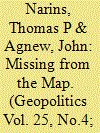| Srl | Item |
| 1 |
ID:
174654


|
|
|
|
|
| Summary/Abstract |
Powerful states often use tools of economic statecraft, such as foreign aid and other financial policy instruments, in a bid to “purchase” influence as well as establish regional leadership among their neighbors. How and why do these states undertake similar economic statecraft strategies and policies? The article examines the evolution of infrastructure financing policy of China and Japan and identifies the ever changing and, yet at the same time, mirroring interaction between the two countries’ development finance practices. We argue that emulation and competition have led to the process of policy diffusion between these two countries. The competition between these two foreign aid leaders in East Asia especially after China’s Belt and Road Initiative has shaped the region’s infrastructure development dynamics as they strive to move the equilibrium outcome to their advantage. Such equilibrium through the policy diffusion process has important implications on global development governance.
|
|
|
|
|
|
|
|
|
|
|
|
|
|
|
|
| 2 |
ID:
172807


|
|
|
|
|
| Summary/Abstract |
Historical and conventional international relations (IR) frameworks describe the Belt Road Initiative (BRI) as representing a newly ambitious Chinese drive into global politics that positions China as moving away from its long-time reticence towards foreign entanglements. This raises a contradiction of China being at one and the same time both a defender of its own territorial sovereignty while also being engaged in various projects, particularly the BRI and the associated Asian Infrastructure Investment Bank (AIIB), that point in completely different directions. This paper seeks to build upon and move beyond conventional framings to understand how the BRI represents a conflict over the workings of state sovereignty that such frameworks have trouble addressing. We argue that the absence of an official Chinese government BRI map promotes a ‘useful fuzziness’ with regards to China being open to crafting a new as of yet undefined geopolitical identity. In light of the absence of such a map, this work considers key ideas relating to China’s geopolitical expansion via the BRI in terms of so-called sovereignty regimes – the idea that various practices of authority and control emanating originally from states take different geographical shapes. Conflicts arise when a state, such as China, finds itself caught between the operational imperatives of multiple regimes. By identifying the current sovereignty dynamics raised by the BRI in light of the relevant, yet distinctive historical experience of the Marshall Plan, this work can be used as a model for understanding how China’s current leadership is managing the debate of simultaneously protecting ‘strong borders’ yet also promoting a policy of ‘going out’.
|
|
|
|
|
|
|
|
|
|
|
|
|
|
|
|